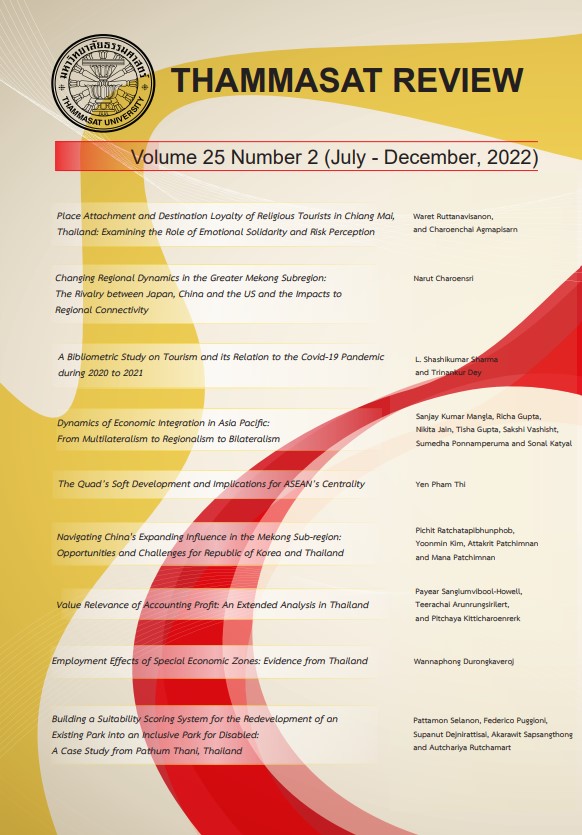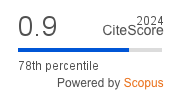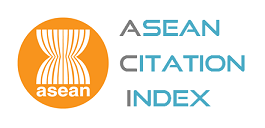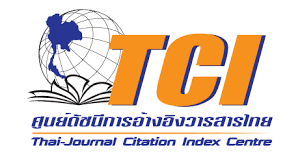Employment Effects of Special Economic Zones: Evidence from Thailand
Keywords:
Special economic zones, Employment generation, Economic development, InvestmentAbstract
In 2015, Thailand established Special Economic Zones (SEZs) in ten border provinces across the country. However, despite a generous fiscal incentive package and upgraded infrastructure, the SEZs have not attracted the intended level of investment. This paper investigates the causal impacts of the SEZ policy in Thailand on employment, using a balanced panel data set covering 77 provinces from 2012 to 2020. The results of a difference-in-difference (DID) approach show that in provinces with SEZs, employment of native workers (both formal and informal) declines by 7 percent compared to provinces with no SEZs. This negative impact is largely due to a significant decrease in informal employment. There was no significant change in the number of migrant workers in treated provinces compared to those without SEZs. The findings also confirm the validity of the parallel-trends assumption and show no evidence of an anticipatory treatment effect prior to the implementation of the SEZ policy. These findings suggest that the SEZ policy needs to be revised to place more emphasis on employment generation and promoting inclusive growth through subregional development.
References
Abadie, A. (2005). Semiparametric difference-in-differences estimators. Review of Economic Studies, 72(1), 1-19. https://doi.org/10.1111/0034-6527.00321
Aggarwal, A. (2007). Impact of special economic zones on employment, poverty, and human development. Working paper no. 194. New Delhi: Indian Council for Research on International Economic Relations. https://www.econstor.eu/handle/10419/176213
Aggarwal, A. (2022). Special economic zones in the Indonesia-Malaysia-Thailand growth triangle: Opportunities for collaboration. Asian Development Bank. http://dx.doi.org/ 10.22617/TCS210449-2
Akinci, G., & Crittle, J. (2008). Special economic zone: Performance, lessons learned, and implication for zone development. https://documents.worldbank.org/en/publication/documents-reports/documentdetail/343901468330977533/special-economic-zone-performance-lessons-learned-and-implication-for-zone-development
Alkon, M. (2018). Do special economic zones induce developmental spillovers? Evidence from India’s states. World Development, 107, 396-409. https://doi.org/10.1016/j. worlddev.2018.02.028
Antras, P. (2020). Global production: Firms, contracts, and trade structure. Oxford: Princeton University Press.
Ashenfelter, O., & Card, D. (1985). Using the longitudinal structure of earnings to estimate the effect of training programs. Review of Economics and Statistics, 67(4), 648-660. https://doi.org/10.2307/1924810
Athukorala, P. C. (2014). Global production sharing and trade patterns in East Asia. In: I. N. Kaur & N. Sing (Eds.), The Oxford Handbook of the Economics of the Pacific Rim (pp. 65-95), Oxford University Press. https://doi.org/10.1093/oxfordhb/978019975 1990.013.014
Athukorala, P. C., & Kohpaiboon, A. (2014). Global production sharing, trade patterns, and industrialization in Southeast Asia. In: I. Coxhead (Ed.), Routledge Handbook of Southeast Asian Economics (pp. 139-161). Routledge.
Bertrand, M., Duflo, E., & Mullainathan, S. (2004). How much should we trust difference-in-differences estimates? Quarterly Journal of Economics, 119(1), 249-275. https://doi. org/10.1162/003355304772839588
BOI. (2021). Investment promotion policy for investment in SEZ. https://www.boi.go.th/index. php?page=SEZ_policy&language=en
BOI. (2022). Investment statistics. https://www.boi.go.th/index.php?page=statistics_condition _promotion.
Buba, J., & Wong, M. D. (2017). Special economic zones: An operational review of their impacts. http://documents.worldbank.org/curated/en/316931512640011812/Special-economic-zones-an-operational-review-of-their-impacts
Durongkaveroj, W. (2022a). Emphasis on domestic value added in export in the era of global value chain: Evidence from Thailand. Journal of Industrial and Business Economics, forthcoming. https://doi.org/10.1007/s40812-022-00239-9
Durongkaveroj, W. (2022b). Five years of Thailand’s special economic development zones: A failure to create development? Chiang Mai Journal of Economics, 26(1), 47-60. https://so01.tci-thaijo.org/index.php/CMJE/article/view/254193
Farole, T. (2011). Special economic zones in Africa: Comparing performances and learning from global experiences. https://openknowledge.worldbank.org/handle/10986/2268
Farole, T., & Akinci, G. (2011). Special economic zones: Progress, emerging challenges, and future directions. Direction in Development Series. World Bank. https://openknowledge.worldbank.org/handle/10986/2341
Fernandes, A. M., Kee, H. L., & Winkler, D. (2022). Determinants of global value chain participation: Cross-Country Evidence. World Bank Economic Review, 36(2), 329-360. https://doi.org/10.1093/wber/lhab017
Frick, S. A., Rodriguez-Pose, A., & Wong, M. D. (2019). Toward economically dynamic special economic zones in emerging countries. Economic Geography, 95(1), 30-64. https://doi.org/10.1080/00130095.2018.1467732
Ge, W. (1999). Special economic zones and the opening of Chinese economy: Some lessons for economic liberalization. World Development, 27(7), 1267-1285. https://doi.org/ 10.1016/S0305-750X(99)00056-X
Gereffi, G. (2005). The global economy: Organization, governance and development. In: N. J. Smelse & R. Swedberg (Eds.): The Handbook of Economic Sociology (2nd ed., pp. 160-182). Princeton University Press.
Goodman-Bacon, A. (2021). Difference-in-differences with variation in treatment timing. Journal of Econometrics, 225(2), 254-277. https://doi.org/10.1016/j.jeconom. 2021.03.014
Lechner, M. (2011). The estimation of causal effects by difference-in-difference methods. Foundations and Trends(R) in Econometrics, 4(3), 165-224. https://doi.org/10.1016/ j.jeconom.2021.03.014
Liu, Z. (2002). Foreign direct investment and technology spillovers: Evidence from China. Journal of Comparative Economics, 30(3), 579-602. https://doi.org/10.1006/jcec. 2002.1789
Lu, Y., Wang, J., & Zhu, L. (2019). Place-based policies, creation, and agglomeration economies: Evidence from China’s economic zone program. American Economic Journal: Economic Policy, 11(3), 325-360. https://doi.org/10.1257/pol.20160272
Jensen, C. (2018). The employment impact of Poland’s special economic zones policy. Regional studies, 52(7), 877-889. https://doi.org/10.1080/00343404.2017.1360477
Levien, M. (2011). Special economic zones and accumulation by dispossession in India. Journal of Agrarian Change, 11(4), 454-483. https://doi.org/10.1111/j.1471-0366.2011.00329.x
Levien, M. (2013). Regimes of dispossession: From steel towns to special economic zones. Development and Change, 44(2), 381-407. https://doi.org/10.1111/dech.12012
Meyer, K. E., Li, C., & Schotter, A. P. J. (2020). Managing the MNE subsidiary: Advancing a multi-level and dynamic research agenda. Journal of International Business Studies, 51, 538-576. https://doi.org/10.1057/s41267-020-00318-w
Misra, K. (2022). Political domination and economic dispossession of farmers: The case of land acquisition for special economic zones in India. Journal of Globalization and Development, 12(2), 181-219. https://doi.org/10.1515/jgd-2020-0083
NESDC. (2022). Special economic zones (SEZs) development progress. https://www.nesdc. go.th/ewt_dl_link.php?nid=5195.
UNCTAD. (2019). World investment report 2019 special economic zones. UNCTAD. https://investmentpolicy.unctad.org/publications/1204/world-investment-report-2019---special-economic-zones
Wang, J. (2013). The economic impact of Special Economic Zones: Evidence from Chinese municipalities. Journal of Development Economics, 101, 133-147. https://doi.org/ 10.1016/j.jdeveco.2012.10.009
Warr, P., & Menon, J. (2016). Cambodia’s Special Economic Zones. Journal of Southeast Asian Economies, 33(3), 273-290. https://www.jstor.org/stable/44132407
World Bank. (2020). World development report 2020: Trading for development in the age of global value chains. https://www.worldbank.org/en/publication/wdr2020
Yiming, Y., & Lei, H. (2020). The poverty reduction effect of China’s special economic zones: Case study of Shenzhen. In: Y. Yuan (ed.), Studies on China’s Special Economic Zones 3 (pp. 1-20). Springer. https://doi.org/10.1007/978-981-13-9841-4_1
Zeng, D. Z. (2015). Global experiences with special economic zones: With a focus on China and Africa. https://openknowledge.worldbank.org/handle/10986/21854.
Downloads
Published
How to Cite
Issue
Section
License
Copyright (c) 2022 Thammasat Review

This work is licensed under a Creative Commons Attribution-NonCommercial-NoDerivatives 4.0 International License.
The opinions and ideas expressed in all submissions published in Thammasat Review are solely that of the author(s) and do not necessarily reflect that of the editors or the editorial board.
The copyright of all articles including all written content and illustrations belong to Thammasat Review. Any individuals or organisation wishing to publish, reproduce and distribute a particular manuscript must seek permission from the journal first.








